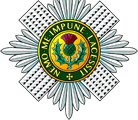During the next few years tension was rising in South Africa. After the British captured the Cape of Good Hope during the Napoleonic Wars the Boers, descendants of the settlers of the former Dutch colony, resented imposition of the British form of colonial government and eventually headed off northwards into what became the Orange Free State and the Transvaal. In the later stages of the 19th Century an awkward political situation anyway was made worse when, first, diamonds were found at Kimberley, very close to the Boer states, and soon afterwards gold in the Witwatersrand in the Transvaal. This led to a huge influx of miners and others and while this new found source of taxation was welcome to the largely agrarian Boers, what, seen from outside, was oppression of the miners, as well as grievances raised by the miners themselves, stoked the fires which led, after a number of earlier incidents, to the outbreak of the Boer War on 9 October 1899. Prior to this the British had been quietly building up their garrisons in the Cape Colony and Natal, while President Paul Kruger of the Transvaal was acquiring supplies of armaments, mainly from Germany.
The 1st Battalion, in a four battalion Guards Brigade, left Southampton on 22 October and arrived in Cape Town just over three weeks later, to be taken aback by the news that the Boers had bottled up British troops in Ladysmith, Mafeking and Kimberley. The Guards Brigade were in the Kimberley relief expedition approaching from Natal. This, led by Lieutenant General Lord Methuen, a Scots Guardsman and later Colonel of the Regiment, started off on 21 November and two days later at Belmont defeated the Boers, who quickly withdrew northwards. Unlike the British, at this stage the Boers were very mobile and acted accordingly. So it was unusual for a Boer force to hold its ground when seriously threatened, because there was no point in their doing so. Next on the route towards Kimberley, still eighteen miles away, was the Modder River, its riverbed a natural defensive position. This the Boers held resourcefully on 28 November and when the British approached again early next day, they found the enemy gone. At this point contact was made with the garrison at Kimberley by means of naval searchlight signalling in Morse Code. As they said that they could hold on for another forty days Lord Methuen decided to pause and build up his forces, get the railway back into operation behind him and build a good bridge over the Modder River. The Boers did not waste time in the interval and six miles further on towards Kimberley prepared a very strong defensive position on a wide front at the foot of a range at Magersfontein Hill. The Guards Brigade were on the right of the night advance early on 11 December and were barely involved but the Highland Brigade in the centre, on whose success the attack depended, were caught by Boer fire before they were able to deploy to attack and lost very heavily. In a matter of days, “The Black Week”, each separate relief expedition towards the three besieged towns was defeated. This led to Field Marshal Lord Roberts’ appointment to command in South Africa and a lull for extensive reorganisation, of which better mobility was a prerequisite. By February Lord Roberts was ready to move. In a well composed and executed plan he sent a mounted force round the Boers’ left flank at Magersfontein, which relieved Kimberley, while duping them into thinking he was heading for Bloemfontein. So they left Magersfontein in a hurry, abandoning a lot of equipment as they did so, only to be caught at Paardeberg, where Lord Roberts sealed them off in front as the Kimberley mounted force cut them off from behind. The main Boer forces then surrendered.
That left groups of mounted Boers formed into commandos (how that word came into English usage) under resourceful and innovative leaders such as Christian de Wet and Koos de la Rey. In the spring of 1900 the 2nd Battalion arrived from England and both, in different parts of South Africa, were involved in the next two years of laborious operations needed finally to put an end to the Boer raids. There were occasional skirmishes, a great deal of marching over long distances, great heat, great cold and much discomfort. On top of this there was disease, more Scots Guardsmen dying from that than enemy action. There were two more Battle Honours “MODDER RIVER” and “SOUTH AFRICA, 1899-1902”.


